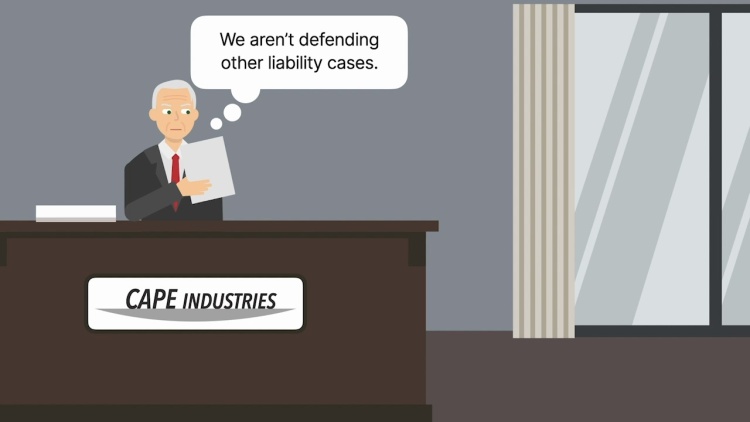Craig v. Lake Asbestos of Quebec, Ltd.
United States Court of Appeals for the Third Circuit
843 F.2d 145 (1988)
- Written by John Caddell, JD
Facts
Clarence Craig (plaintiff) was exposed to asbestos while working at a plant owned by Owens-Corning (defendant). Craig and his wife sued Owens Corning, as well as all the companies that provided asbestos to Owens-Corning, for personal injury damages. Most of these entities settled with the Craigs. One, North American Asbestos Corporation (NAAC), was dismissed from the case because it had dissolved. Another, Lake Asbestos of Quebec, Inc. (LAQ) (defendant) settled conditionally, maintaining its right to contribution from two affiliates of NAAC, Cape Industries (Cape) (defendant) and Charter Consolidated, PLC (Charter) (defendant). Cape was the parent corporation of NAAC and held all its shares. Cape, however, was judgment-proof; it held no assets in the United States and other plaintiffs had failed to reach its assets in Britain. Charter owned 67 percent of Cape’s stock and nominated three of Cape’s 10-member board of directors. Cape generally consulted Charter on major financial and management decisions. Cape’s CEO regularly updated Charter on Cape’s progress. Cape, however, on at least some occasions made decisions without consulting Charter. Cape and Charter also maintained separate books and records and consulted separate accountants. The Craigs and LAQ argued that Cape’s veil should be pierced and Charter should be held directly liable for Cape’s (and NAAC’s) actions. The trial court agreed. Charter appealed.
Rule of Law
Issue
Holding and Reasoning (Sloviter, J.)
What to do next…
Here's why 899,000 law students have relied on our case briefs:
- Written by law professors and practitioners, not other law students. 47,000 briefs, keyed to 994 casebooks. Top-notch customer support.
- The right amount of information, includes the facts, issues, rule of law, holding and reasoning, and any concurrences and dissents.
- Access in your classes, works on your mobile and tablet. Massive library of related video lessons and high quality multiple-choice questions.
- Easy to use, uniform format for every case brief. Written in plain English, not in legalese. Our briefs summarize and simplify; they don’t just repeat the court’s language.





